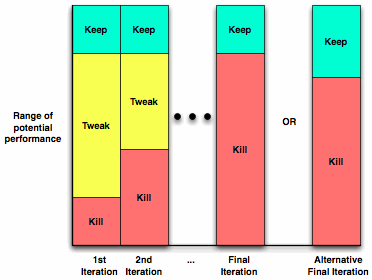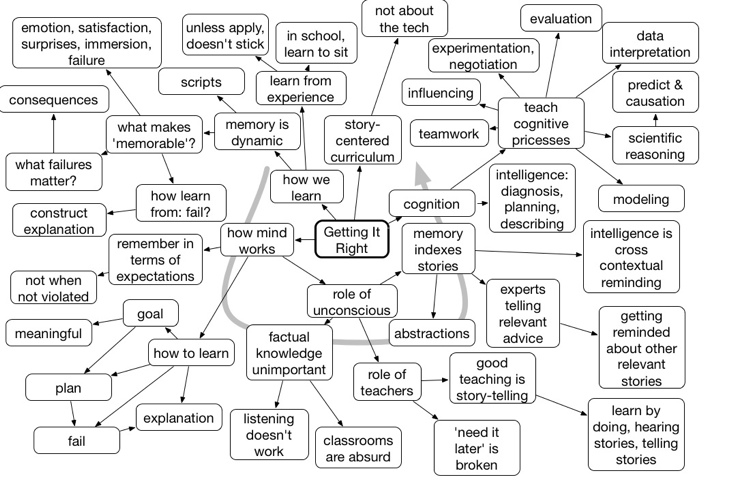There are no right answers, only tradeoffs.
This is something I frequently say in my design workshops (games, mobile, whatever). When you are doing a design, there are many factors to be considered, and many alternatives. The question is not “what is the right answer”, the question is “what is the right answer for now, in this context”. The reason being that there are many possible answers, and you will have to consider several alternatives.
When we do an analysis, we have to decide whether it’s a skill, knowledge, attitude, or something else. Then we can decide whether to address it with training, job aids, interface redesign, or something else. And usually it could be one or the other but we eventually converge on a solution.
In the interface design space, there arose an approach called a ‘design rationale‘ just to keep new folks on the team from revisiting prior decisions. There were even tools created to document these. There are a lot of factors that affect a solution, including audience, current environment (tech, sociocultural, resources, etc), and goals. There will be tensions between them, and the solution will end up being a compromise that is the best guess at a solution space.
Or, as I depicted it a while ago, the potential solution space is large, and various factors end up constraining that space down to a solution (if we end up with the empty set, we have to relax one or more of the constraints). It helps to have constraints. Some of the solutions are better than others, but seldom is any one so dominantly optimal. Just think of the problem of what car to buy? Economy, style, reliability, current sales incentives, there are lots of factors, and you probably ended up choosing among several possibilities.
On a side note, this is an important way the real world differs from ‘schooling’. I like what David Jonassen says about how the problems we give our kids in class don’t bear any relation to the problems they face in the world (and his focus on changing the problems seen in schools).
And, as m’lady likes to say, there should be no ‘coulda shoulda woulda’s. You made the best decision at the time (right?), and then if it later turns out to have been wrong you had no way to know or you would’ve factored it into your decision at the time. Unless you missed something you could and should have seen then, you still made the right decision.
This is why consultants typically answer with ‘it depends’ when asked for specifics beforehand (much to potential customers dismay). When the expert realizes the myriad factors that could affect the choices and outcomes, it’s naive to give a pat answer to the client who needs help. There are likely parameters that affect the decision and may help to constrain it to a range, and the experience may allow a qualified guess, but don’t expect a binding agreement until a scoping exercise has been performed.
It is important to be explicit about this, rather than assume you can make a perfect decision. Recognizing the process allows you to be open in your evaluations and honest in your assessment of the solution. Make the best tradeoffs you can, recognize that you can be wrong, and move ahead.

